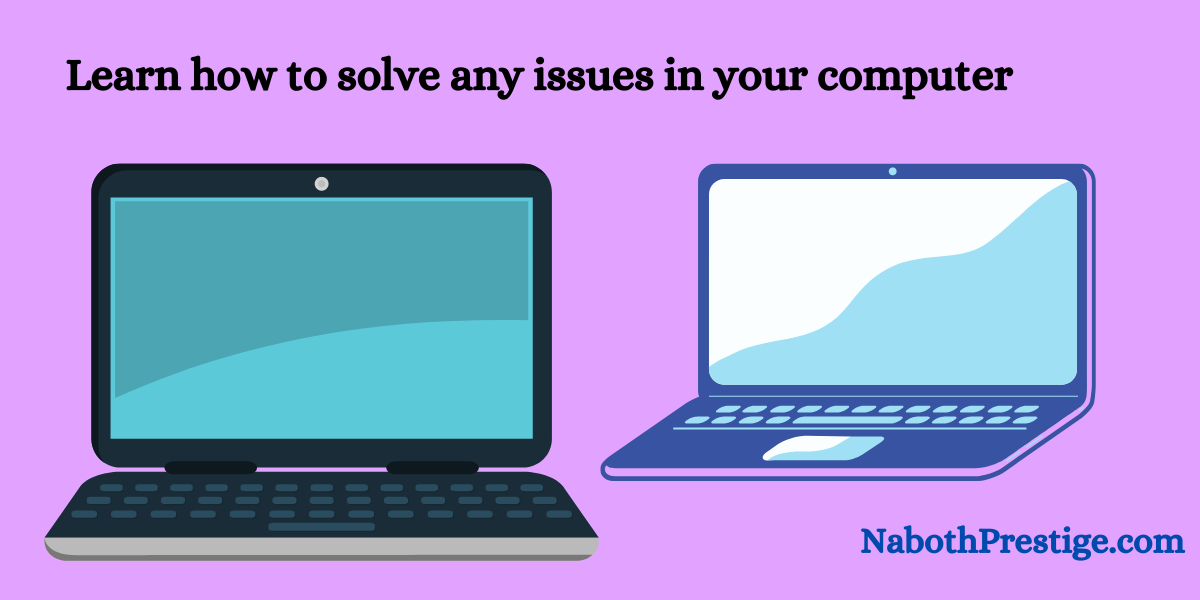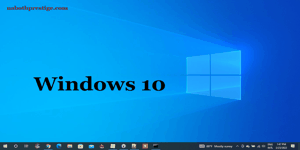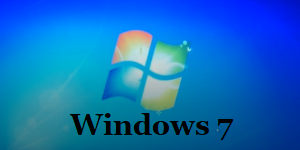Computer Articles | Page 3
The computer is important for its ability to process and store vast amounts of information, automate tasks, facilitate communication, and enable complex simulations, leading to advancements in various fields and enhancing human productivity and capabilities.
Latest Articles
In This Category, There Are Also
Windows 10 Course Lesson 1
Windows 10 Course Lesson 2
CHATGPT, How to Use it and its News
What Is Artificial Intelligence
Evolution and the History of Windows
How to reinstall Windows 11 or Windows 10 without losing data
How to Reinstall Windows 7 Without Losing Data
Windows 11 Installation Use and News
Comparison Between Windows 11 and Windows 10
Checking Your Windows Version: Four Easy Methods
Boosting Your YouTube Popularity Strategies for Success
BitLocker Windows 10 and 11
Effective Strategies for Deleting Stubborn Files
Checking Your Windows Version: Four Easy Methods
How to Make a Bootable USB Drive to Install Windows 11 10 8 7
Installing Windows 8 Using a Bootable USB Drive
Online Selling What Is It and How to Start
Make Money on YouTube
Zoom Meeting
Work From Home Freelance
What is a computer?
A computer is an electronic device that is capable of receiving, processing, and outputting data according to a set of instructions or programs. It can perform various tasks, from basic calculations to complex operations, and it plays a crucial role in modern society for both personal and professional use.
Computers consist of several key components, including:
- Central Processing Unit (CPU): This is the “brain” of the computer, responsible for executing instructions and performing calculations. It processes data by fetching instructions from memory, decoding them, executing the required operations, and storing results back in memory.
- Memory (RAM): Random Access Memory (RAM) is the temporary storage area where the computer stores data and programs that are currently in use. It allows for quick access to data, improving the computer’s overall performance.
- Storage Devices: Computers use various types of storage devices to store data in a more permanent form. Hard disk drives (HDDs) and solid-state drives (SSDs) are common examples. These devices retain data even when the computer is turned off.
- Input and Output Devices: Input devices, like keyboards, mice, and touchscreens, allow users to provide instructions and data to the computer. Output devices, such as monitors, printers, and speakers, display or provide results to the user.
- Motherboard: The motherboard is the main circuit board that connects and allows communication between all the components of the computer.
- Operating System (OS): The operating system is a software layer that manages the computer’s hardware and provides a user interface. It enables users to interact with the computer and run applications.
- Software: Software refers to the programs and applications that define what tasks the computer can perform. This includes everything from simple text editors to complex video games and productivity tools.
- Networking Components: Computers can be connected to networks, enabling communication and data exchange between devices. Network adapters and routers facilitate this connectivity.
Learn more about computers

Computers were not always as small, sleek, fast, and powerful as they are now. Nowadays, a laptop (a portable computer) can be carried by anyone, even a child, due to its small size and light weight. You can take it with you anywhere by putting it in your handbag or backpack. These computers are beautiful and rechargeable, and some can operate for up to 10 hours without a charger. They have remarkable processing power, the ability to perform multiple tasks at once, and abundant storage space.
Because of this, comparing modern computers to those from previous generations is like comparing day and night. Continue reading about all computer generations, from the very first to the present, and you will understand.
Generations of computers from 1940 to the present day
The evolution of computers over the decades can be categorized into distinct generations, each marked by significant technological advancements that revolutionized the field of computing. These generations not only represent the progression of hardware and architecture but also reflect the broader societal changes that accompanied these technological shifts. From massive machines that filled entire rooms to sleek devices that fit in our pockets, the journey of computers through these generations is a testament to human innovation and ingenuity.
1. First Generation (1940s - early 1950s): The Birth of Electronic Computing
The first generation of computers emerged during the 1940s, marking the dawn of electronic computation. These early machines relied on vacuum tubes, large electronic devices that could amplify and switch electronic signals. The iconic ENIAC (Electronic Numerical Integrator and Computer) and UNIVAC I (Universal Automatic Computer I) were prominent examples of this era. These computers were enormous, occupying entire rooms, and consumed considerable amounts of power. Despite their size, they introduced the concept of automated calculations, replacing manual methods with electronic processes. The programming of these machines was laborious, involving manual wiring setups and plugboards. The first generation laid the groundwork for what would become a revolutionary journey.
2. Second Generation (early 1950s - late 1950s): Transistors and Compact Computing
The second generation of computers witnessed a transformative leap with the advent of transistors. These small semiconductor devices replaced vacuum tubes, providing improved reliability, reduced power consumption, and a significant decrease in size. This breakthrough enabled the creation of computers that were smaller, more efficient, and generated less heat. Magnetic core memory, another innovation of this era, offered faster and more stable data storage. Programming languages like COBOL and FORTRAN were introduced, streamlining software development and making computers more accessible to a wider range of users. The shift from vacuum tubes to transistors marked a critical milestone, demonstrating the potential for more practical and versatile computing machines.
3. Third Generation (late 1950s - 1960s): Integrated Circuits and Mainframes
The third generation introduced integrated circuits (ICs), which paved the way for even more profound advancements. ICs packed multiple transistors and other components onto a single silicon chip, exponentially increasing computing power. This era saw the rise of mainframe computers, large-scale machines that were capable of handling data processing for organizations and government institutions. High-level programming languages became more prevalent, further simplifying software development. COBOL and FORTRAN evolved, and new languages like BASIC and ALGOL emerged. The concept of time-sharing allowed multiple users to access a single computer simultaneously, enhancing efficiency and utilization. The marriage of integrated circuits and mainframes transformed computing into a practical tool for business, science, and industry.
4. Fourth Generation (1970s - 1980s): Microprocessors and Personal Computing
The fourth generation witnessed a revolution that brought computing power to the masses. The introduction of microprocessors, complete central processing units (CPUs) on a single chip, led to the development of personal computers (PCs). This innovation, pioneered by companies like Intel, marked a turning point in computing history. PCs became smaller, more affordable, and accessible to individuals, heralding the era of personal computing. Graphical User Interfaces (GUIs) replaced command-line interfaces, making computers more intuitive to use. Operating systems like MS-DOS and Windows provided user-friendly interactions. Networking technologies emerged, connecting computers and facilitating data exchange. The fourth generation marked the democratization of computing, with computers finding their way into homes, schools, and businesses around the world.
5. Fifth Generation (1990s - present): Advanced Computing and Connectivity
The fifth generation ushered in a period of unprecedented technological convergence. Supercomputers capable of immense processing power became essential for scientific simulations and complex data analysis. Parallel processing and distributed computing architectures became vital for handling vast amounts of data. The internet became a global network, connecting people and devices like never before. The focus shifted toward advanced computing technologies, including artificial intelligence (AI) and machine learning. These innovations led to the creation of systems capable of understanding and processing natural language, paving the way for voice assistants and chatbots. Quantum computing, a frontier technology, promises to revolutionize computational power by exploiting the principles of quantum mechanics.
Conclusion: The Ever-Evolving Journey
The evolution of computers through these generations represents an unceasing journey of progress and innovation. From the massive machines of the first generation to the handheld devices of today, each phase has contributed to shaping the modern digital landscape. The rise of transistors, integrated circuits, microprocessors, and advanced networking technologies has led to a world where computing is an integral part of our daily lives.
As we stand on the cusp of new horizons, such as quantum computing and AI-driven advancements, it’s essential to reflect on the remarkable journey that has brought us here. The generations of computers serve as a testament to human curiosity, creativity, and the relentless pursuit of knowledge, ultimately driving us toward a future where the boundaries of what’s possible in computing continue to expand.

